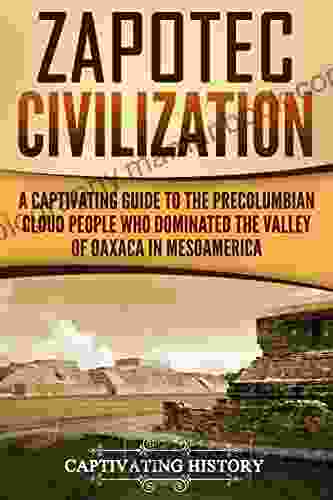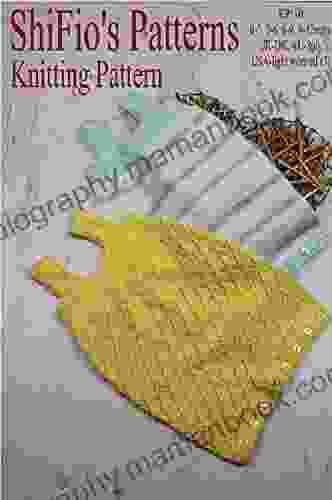Muscles, Joints, and Ligaments: Mnemonics and Study Tips

The human body is an intricate tapestry of muscles, joints, and ligaments, each playing a vital role in our movement, posture, and overall well-being. For healthcare professionals, a thorough understanding of these anatomical structures is paramount. However, grappling with the vast ocean of information can often be overwhelming. This article aims to provide you with a comprehensive and engaging guide to muscles, joints, and ligaments, armed with an arsenal of mnemonics and study tips to help you conquer this complex subject matter.
Muscles, the powerhouses of our bodies, are responsible for our every move. They contract and relax to generate force, enabling us to walk, talk, breathe, and perform countless other actions. Understanding the different types of muscles and their functions is crucial for comprehending their role in human movement.
- Skeletal Muscles: These are voluntary muscles attached to bones. They are responsible for conscious movements, such as walking, running, and lifting objects.
- Smooth Muscles: Found in the walls of organs, smooth muscles control involuntary functions like digestion, blood flow, and breathing.
- Cardiac Muscles: Unique to the heart, cardiac muscles contract rhythmically to pump blood throughout the body.
"SSK"
4 out of 5
| Language | : | English |
| File size | : | 117 KB |
| Text-to-Speech | : | Enabled |
| Screen Reader | : | Supported |
| Enhanced typesetting | : | Enabled |
| Print length | : | 7 pages |
| Lending | : | Enabled |
- Skeletal muscles: Voluntary, attached to bones
- Smooth muscles: Involuntary, in organs
- Kardiac muscles: Found only in heart
- Create a Muscle Map: Draw a diagram of the major muscle groups in the body and label them. This visual representation will help you remember their locations and functions.
- Practice Muscle Actions: Flex, extend, rotate, and abduct different muscle groups to reinforce their actions.
- Use Flashcards: Create flashcards with muscle names on one side and functions or locations on the other.
Joints are the meeting points of two or more bones, providing support, flexibility, and range of motion. There are multiple types of joints, each with its unique structure and function.
- Synovial Joints (Freely Movable): These are the most common type of joint, allowing for a wide range of movements, such as the knee and elbow joints.
- Cartilaginous Joints (Slightly Movable): Connected by cartilage, these joints allow for limited movement, such as the vertebrae in the spine.
- Fibrous Joints (Immovable): These joints are held together by fibrous tissue, preventing any movement, such as the joints in the skull.
"SF-C-F"
- Synovial joints: Freely movable
- Fibrous joints: Immovable
- Cartilaginous joints: Slightly movable
- Build Joint Models: Use cardboard or foam to create models of different joint types. This hands-on approach will help you visualize their structures and functions.
- Identify Joints in Images: Practice identifying joints in X-rays, MRIs, and cadaver images.
- Explore Joint Movements: Experiment with different joint movements and observe their range of motion.
Ligaments are tough, fibrous bands of tissue that connect bones to bones. They provide stability and support to joints, preventing excessive movement and dislocation.
"LL-S"
- Ligaments: Connect bones to bones
- Local: Stay in one place
- Strong: Provide stability
- Trace Ligament Diagrams: Study detailed diagrams of ligaments and trace their paths to understand their connections and functions.
- Palpate Ligaments: Feel for ligaments on your own body (e.g., medial collateral ligament of the knee) to reinforce their locations and provide a tactile understanding.
- Review Ligament Injuries: Familiarize yourself with common ligament injuries, such as ACL tears and MCL sprains.
Navigating the complexities of muscles, joints, and ligaments can be a challenging endeavor. However, with the help of mnemonics and effective study strategies, you can transform this daunting task into an engaging and rewarding learning experience. By applying the techniques outlined in this article, you will develop a solid foundation in human anatomy and gain the confidence to excel in your studies or professional practice. Remember, the human body is a masterpiece, and understanding its intricate workings is a journey of discovery that will empower you to provide exceptional care and enhance your knowledge in the field of healthcare.
Image Alt Attributes:
- Image 1: Muscular System with labeled muscle groups
- Image 2: Types of Joints (Synovial, Cartilaginous, Fibrous)
- Image 3: Ligaments of the Knee (ACL, PCL, MCL, LCL)
4 out of 5
| Language | : | English |
| File size | : | 117 KB |
| Text-to-Speech | : | Enabled |
| Screen Reader | : | Supported |
| Enhanced typesetting | : | Enabled |
| Print length | : | 7 pages |
| Lending | : | Enabled |
Do you want to contribute by writing guest posts on this blog?
Please contact us and send us a resume of previous articles that you have written.
 Top Book
Top Book Novel
Novel Fiction
Fiction Nonfiction
Nonfiction Literature
Literature Paperback
Paperback Hardcover
Hardcover E-book
E-book Audiobook
Audiobook Bestseller
Bestseller Classic
Classic Mystery
Mystery Thriller
Thriller Romance
Romance Fantasy
Fantasy Science Fiction
Science Fiction Biography
Biography Memoir
Memoir Autobiography
Autobiography Poetry
Poetry Drama
Drama Historical Fiction
Historical Fiction Self-help
Self-help Young Adult
Young Adult Childrens Books
Childrens Books Graphic Novel
Graphic Novel Anthology
Anthology Series
Series Encyclopedia
Encyclopedia Reference
Reference Guidebook
Guidebook Textbook
Textbook Workbook
Workbook Journal
Journal Diary
Diary Manuscript
Manuscript Folio
Folio Pulp Fiction
Pulp Fiction Short Stories
Short Stories Fairy Tales
Fairy Tales Fables
Fables Mythology
Mythology Philosophy
Philosophy Religion
Religion Spirituality
Spirituality Essays
Essays Critique
Critique Commentary
Commentary Glossary
Glossary Bibliography
Bibliography Index
Index Table of Contents
Table of Contents Preface
Preface Introduction
Introduction Foreword
Foreword Afterword
Afterword Appendices
Appendices Annotations
Annotations Footnotes
Footnotes Epilogue
Epilogue Prologue
Prologue Angel Devlin
Angel Devlin Lakeisha Dixon
Lakeisha Dixon Alison Hawthorne Deming
Alison Hawthorne Deming David L Tamarin
David L Tamarin Juliet Uzor
Juliet Uzor Justin Rhodes
Justin Rhodes G L Peebles
G L Peebles Diana Abu Jaber
Diana Abu Jaber Rahul Seth
Rahul Seth Robert Thorogood
Robert Thorogood Rob Winters
Rob Winters Shifio S Patterns
Shifio S Patterns Danica Walker
Danica Walker Jake Schafft
Jake Schafft Angeline Gormley
Angeline Gormley Booksumo Press
Booksumo Press Sunanda J Chatterjee
Sunanda J Chatterjee Leo Tolstoy
Leo Tolstoy Captivating History
Captivating History Linda Hill
Linda Hill
Light bulbAdvertise smarter! Our strategic ad space ensures maximum exposure. Reserve your spot today!

 Jerome BlairCaptivating Guide to the Pre-Columbian Cloud People Who Dominated the Valley...
Jerome BlairCaptivating Guide to the Pre-Columbian Cloud People Who Dominated the Valley... Billy FosterFollow ·4.6k
Billy FosterFollow ·4.6k Devin RossFollow ·8.5k
Devin RossFollow ·8.5k Ervin BellFollow ·3.6k
Ervin BellFollow ·3.6k Alfred RossFollow ·16.8k
Alfred RossFollow ·16.8k Ezekiel CoxFollow ·13.8k
Ezekiel CoxFollow ·13.8k Levi PowellFollow ·9.6k
Levi PowellFollow ·9.6k Drew BellFollow ·7.1k
Drew BellFollow ·7.1k Arthur MasonFollow ·10.6k
Arthur MasonFollow ·10.6k

 Barry Bryant
Barry BryantKnitting Pattern Kp190 Baby Sleeping Bags Sizes 3mths...
This easy-to-follow...

 Rudyard Kipling
Rudyard KiplingFolk Music Arrangements of Bartók: A Musical Tapestry of...
Béla Bartók, the renowned...

 Garrett Bell
Garrett BellThe Yellow House Memoir: A Literary Masterpiece that...
A Journey of Resilience,...

 George Martin
George MartinAssassin Witch Dark Faerie: The Bonegates
In the shadowy...
4 out of 5
| Language | : | English |
| File size | : | 117 KB |
| Text-to-Speech | : | Enabled |
| Screen Reader | : | Supported |
| Enhanced typesetting | : | Enabled |
| Print length | : | 7 pages |
| Lending | : | Enabled |














